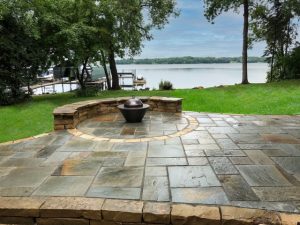When the two-lined chestnut borer is around, oak trees in Minnesota are in danger. Otherwise known as Agrilus Bilineatus, the two-lined chestnut borer will attack any oak species, although red oak is its favorite. It like trees that are already weakened. If conditions like stress, construction, or drought have affected trees in a certain area, then there is a good chance that the TLCB will try to make a home and infest them.
Management
Once an infestation has started, it is difficult to fix the problem. The best way to manage TLCB is through prevention. That means keeping trees as healthy as possible. The more vigorous they are, the better equipped they will be to defend against borers. This means keeping the trees properly watered, maintaining the soil, and not damaging the bark. Anything that causes stress or damage to the tree or might weaken it will encourage the borers to strike.
How Do They Infest Trees?
A TLBC, once it is found a weak enough oak tree, will lay eggs usually in May or June. Over the summer, the larvae suck the nutrients and water from the branches as they feed. This causes leaves to turn brown. You can only see the trails the larvae cause if you cut away a piece of bark to see underneath. The larvae have enlarged heads, and are completely white. They can get up to ¼ inch in length. After a year, they develop into adult beetles and head off to infect more trees.
How to Tell if a Tree is Infected
The first thing you might notice is that the foliage has become sparse, and the leaves have gotten smaller. This usually happens within 1-2 months of larvae being hatched. As the tree gets more damaged, branches will pull back, and the infested leaves will turn red-brown. The trees will often have a pattern of live, damaged and dead leaves. Upper branches will have no leaves, as they will have died. The middle section will have the red-brown leaves, and the lower section leaves will be green. By the end of the summer, the damage stops progressing, only to pick up again the following spring. Once the tree is fully dead, the TLCB will start attacking other trees nearby.
If you suspect an infestation of two-lined chestnut borers, make sure to keep your oak trees strong and healthy to keep the bugs at bay.

